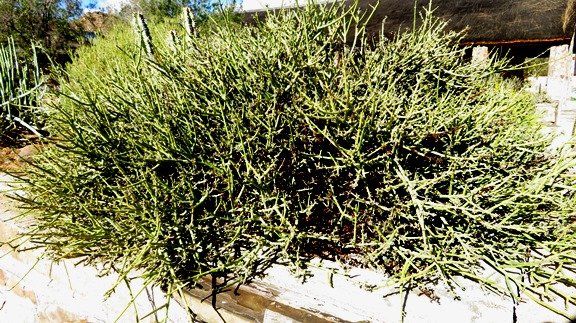Euphorbia rhombifolia

Euphorbia rhombifolia, in Afrikaans the soetmelkbos (sweet milk bush) and botanically previously E. decussata, is a densely-branched, spineless shrub that spreads and reaches 1 m in height. The species is not browsed but not toxic to game and stock either; merely low in palatability.
The species occurs widespread in southern and South Africa, maybe not in Mpumalanga. The photo was taken at Goegap near Springbok.
The plant grows in arid and semi-arid conditions in sandy flats and karoid scrub veld, often forming small colonies. It is for instance common on the western, coastal plains of Namaqualand and the Richtersveld, as well as in the Eastern Cape Karoo. E. rhombifolia is not considered to be threatened in its habitat early in the twenty first century.
A traditional alcoholic beverage, a mead, was in the past (or is still) brewed using this plant as yeast. To those users of the plant it was known as kirriemoer or sikkiriwortel (sikkiri root), suggesting that the plants were dug up for accessing the roots to make the yeast. Moer is (among other things) a local name for yeast, while kirrie is a form of the karee common name of Searsia trees and shrubs, the fruits of which featured in the brewing of mead.
When driving for long hours through the arid inland, pick the most likely, lonely little house in the distant Karoo veld to ask for a taste of the local mead brew. But wait until the police van has disappeared over the hill (Williamson, 2010; Shearing and Van Heerden, 2008; Van Wyk and Gericke, 2000; Gledhill, 1981; iNaturalist; http://redlist.sanbi.org).

